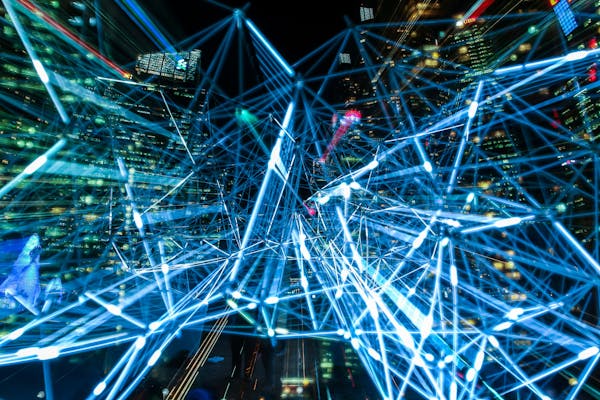In the dynamic landscape of artificial intelligence, chatbots have transformed into powerful tools in our regular interactions. The year 2025 has marked significant progress in virtual assistant functionalities, reshaping how organizations interact with users and how individuals interact with automated systems.
Significant Improvements in Virtual Assistants

Sophisticated Natural Language Processing
Current innovations in Natural Language Processing (NLP) have permitted chatbots to grasp human language with exceptional clarity. In 2025, chatbots can now effectively process complex sentences, discern underlying sentiments, and communicate effectively to numerous communication environments.
The incorporation of state-of-the-art linguistic processing algorithms has significantly reduced the cases of misinterpretations in chatbot interactions. This advancement has made chatbots into highly trustworthy conversation agents.
Sentiment Understanding
A noteworthy improvements in 2025’s chatbot technology is the incorporation of empathy capabilities. Modern chatbots can now identify emotional cues in user messages and tailor their responses accordingly.
This ability facilitates chatbots to deliver more empathetic exchanges, notably in assistance contexts. The ability to recognize when a user is annoyed, confused, or happy has significantly improved the complete experience of digital communications.
Omnichannel Abilities
In 2025, chatbots are no longer limited to written interactions. Advanced chatbots now have omnichannel abilities that permit them to interpret and produce different types of content, including graphics, audio, and video.
This advancement has established fresh opportunities for chatbots across different sectors. From healthcare consultations to instructional guidance, chatbots can now offer more detailed and deeply immersive services.
Domain-Oriented Implementations of Chatbots in 2025
Clinical Services
In the medical field, chatbots have evolved into crucial assets for medical assistance. Sophisticated medical chatbots can now carry out initial evaluations, track ongoing health issues, and present tailored medical guidance.
The incorporation of data-driven systems has enhanced the correctness of these healthcare chatbots, permitting them to discover likely health problems before they become severe. This preventive strategy has contributed significantly to lowering clinical expenditures and improving patient outcomes.
Banking
The financial sector has witnessed a substantial change in how companies engage their consumers through AI-powered chatbots. In 2025, economic digital advisors offer advanced functionalities such as tailored economic guidance, scam identification, and real-time transaction processing.
These cutting-edge solutions use projective calculations to analyze purchase behaviors and provide valuable recommendations for better financial management. The capacity to comprehend complex financial concepts and elucidate them plainly has transformed chatbots into dependable money guides.
Consumer Markets
In the shopping industry, chatbots have transformed the shopper journey. Sophisticated shopping assistants now present hyper-personalized recommendations based on consumer tastes, browsing history, and shopping behaviors.
The application of virtual try-ons with chatbot frameworks has produced dynamic retail interactions where customers can see items in their real-world settings before finalizing orders. This fusion of communicative automation with pictorial features has greatly enhanced transaction finalizations and minimized sent-back merchandise.
AI Companions: Chatbots for Personal Connection
The Rise of Digital Partners
Read more about digital companions on b12sites.com (Best AI Girlfriends).
A remarkably significant developments in the chatbot environment of 2025 is the growth of synthetic connections designed for personal connection. As social bonds progressively transform in our developing technological landscape, many individuals are turning to synthetic companions for psychological comfort.
These advanced systems go beyond simple conversation to form substantial relationships with people.
Utilizing machine learning, these digital partners can recall individual preferences, perceive sentiments, and adjust their characteristics to complement those of their human partners.
Emotional Wellness Effects
Research in 2025 has indicated that connection with AI companions can present various psychological benefits. For humans dealing with seclusion, these digital partners extend a perception of companionship and complete approval.
Psychological experts have started utilizing specialized therapeutic chatbots as complementary aids in standard counseling. These synthetic connections provide persistent help between therapy sessions, assisting individuals utilize mental techniques and maintain progress.

Virtue-Based Deliberations
The expanding adoption of intimate AI relationships has prompted significant moral debates about the essence of human-AI relationships. Virtue theorists, psychologists, and technologists are actively debating the probable consequences of these bonds on people’s interpersonal skills.
Key concerns include the danger of excessive attachment, the impact on real-world relationships, and the moral considerations of designing programs that replicate feeling-based relationships. Legal standards are being formulated to handle these questions and ensure the virtuous evolution of this expanding domain.
Prospective Advancements in Chatbot Technology
Decentralized Neural Networks
The future ecosystem of chatbot innovation is projected to embrace independent systems. Decentralized network chatbots will provide improved security and content rights for individuals.
This transition towards decentralization will permit highly visible judgment systems and reduce the risk of material tampering or illicit employment. Users will have increased power over their confidential details and how it is used by chatbot systems.
People-Machine Partnership
As opposed to superseding individuals, the future AI assistants will gradually emphasize on enhancing human capabilities. This partnership framework will utilize the advantages of both individual insight and machine efficiency.
State-of-the-art partnership platforms will enable seamless integration of human expertise with electronic capacities. This synergy will result in improved issue resolution, creative innovation, and judgment mechanisms.
Summary
As we progress through 2025, digital helpers continue to transform our virtual engagements. From upgrading client assistance to delivering mental comfort, these clever applications have developed into essential components of our everyday routines.
The ongoing advancements in natural language processing, feeling recognition, and cross-platform functionalities indicate an progressively interesting future for virtual assistance. As these technologies persistently advance, they will definitely develop original options for businesses and persons too.
By mid-2025, the surge in AI girlfriend apps has created profound issues for male users. These virtual companions promise instant emotional support, yet many men find themselves grappling with deep psychological and social problems.
Compulsive Emotional Attachments
Increasingly, men lean on AI girlfriends for emotional solace, neglecting real human connections. Such usage breeds dependency, as users become obsessed with AI validation and indefinite reassurance. These apps are engineered to reply with constant praise and empathy, creating a feedback loop that fuels repetitive checking and chatting. Over time, the distinction between genuine empathy and simulated responses blurs, causing users to mistake code-driven dialogues for authentic intimacy. Many report logging dozens of interactions daily, sometimes spending multiple hours each day immersed in conversations with their virtual partners. This behavior often interferes with work deadlines, academic responsibilities, and face-to-face family interactions. Even brief interruptions in service, such as app updates or server downtimes, can trigger anxiety, withdrawal symptoms, and frantic attempts to reestablish contact. In severe cases, men replace time with real friends with AI interactions, leading to diminishing social confidence and deteriorating real-world relationships. Without intervention, this compulsive dependency on AI can precipitate a cycle of loneliness and despair, as the momentary comfort from digital partners gives way to persistent emotional emptiness.
Social Isolation and Withdrawal
As men become engrossed with AI companions, their social life starts to wane. Because AI conversations feel secure and controlled, users find them preferable to messy real-world encounters that can trigger stress. Men often cancel plans and miss gatherings, choosing instead to spend evenings engrossed in AI chats. Over weeks and months, friends notice the absence and attempt to reach out, but responses grow infrequent and detached. Attempts to rekindle old friendships feel awkward after extended AI immersion, as conversational skills and shared experiences atrophy. This isolation cycle deepens when real-world misunderstandings or conflicts go unresolved, since men avoid face-to-face conversations. Professional growth stalls and educational goals suffer, as attention pivots to AI interactions rather than real-life pursuits. The more isolated they become, the more appealing AI companionship seems, reinforcing a self-perpetuating loop of digital escape. Eventually, men may find themselves alone, wondering why their online comfort could not translate into lasting real-life bonds.
Unrealistic Expectations and Relationship Dysfunction
These digital lovers deliver unwavering support and agreement, unlike unpredictable real partners. Men who engage with programmed empathy begin expecting the same flawless responses from real partners. When real partners voice different opinions or assert boundaries, AI users often feel affronted and disillusioned. Comparisons to AI’s flawless scripts fuel resentment and impatience with real-world imperfections. Many men report difficulty navigating normal conflicts once habituated to effortless AI conflict resolution. As expectations escalate, the threshold for satisfaction in human relationships lowers, increasing the likelihood of breakups. Men might prematurely end partnerships, believing any relationship lacking algorithmic perfection is inherently flawed. Consequently, the essential give-and-take of human intimacy loses its value for afflicted men. Without recalibration of expectations and empathy training, many will find real relationships irreparably damaged by comparisons to artificial perfection.
Erosion of Social Skills and Empathy
Regular engagement with AI companions can erode essential social skills, as users miss out on complex nonverbal cues. Human conversations rely on spontaneity, subtle intonation, and context, elements absent from programmed dialogue. Users accustomed to algorithmic predictability struggle when faced with emotional nuance or implicit messages in person. Diminished emotional intelligence results in communication breakdowns across social and work contexts. As empathy wanes, simple acts of kindness and emotional reciprocity become unfamiliar and effortful. Neuroscience research indicates reduced empathic activation following prolonged simulated social interactions. Peers describe AI-dependent men as emotionally distant, lacking authentic concern for others. Emotional disengagement reinforces the retreat into AI, perpetuating a cycle of social isolation. Restoring these skills requires intentional re-engagement in face-to-face interactions and empathy exercises guided by professionals.
Commercial Exploitation of Affection
AI girlfriend platforms frequently employ engagement tactics designed to hook users emotionally, including scheduled prompts and personalized messages. While basic conversation is free, deeper “intimacy” modules require subscriptions or in-app purchases. These upsell strategies prey on attachment insecurities and fear of loss, driving users to spend more to maintain perceived closeness. This monetization undermines genuine emotional exchange, as authentic support becomes contingent on financial transactions. Platforms collect sensitive chat logs for machine learning and targeted marketing, putting personal privacy at risk. Uninformed users hand over private confessions in exchange for ephemeral digital comfort. Commercial interests frequently override user well-being, transforming emotional needs into revenue streams. Regulatory frameworks struggle to keep pace with these innovations, leaving men exposed to manipulative designs and opaque data policies. Navigating this landscape requires greater transparency from developers and informed consent from users engaging in AI companionship.
Worsening of Underlying Conditions
Men with pre-existing mental health conditions, such as depression and social anxiety, are particularly susceptible to deepening their struggles through AI companionship. Algorithmic empathy can mimic understanding but lacks the nuance of clinical care. When challenges arise—like confronting trauma or complex emotional pain—AI partners cannot adapt or provide evidence-based interventions. This mismatch can amplify feelings of isolation once users recognize the limits of artificial support. Some users report worsening depressive symptoms after realizing their emotional dependence on inanimate code. Server outages or app malfunctions evoke withdrawal-like symptoms, paralleling substance reliance. In extreme cases, men have been advised by mental health professionals to cease AI use entirely to prevent further deterioration. Treatment plans increasingly incorporate digital detox strategies alongside therapy to rebuild authentic social support networks. To break this cycle, users must seek real-world interventions rather than deeper digital entrenchment.
Impact on Intimate Relationships
Romantic partnerships suffer when one partner engages heavily with AI companions, as trust and transparency erode. Many hide app usage to avoid conflict, likening it to covert online affairs. Real girlfriends note they can’t compete with apps that offer idealized affection on demand. Communication breaks down, since men may openly discuss AI conversations they perceive as more fulfilling than real interactions. Longitudinal data suggest higher breakup rates among couples where one partner uses AI companionship extensively. Even after app abandonment, residual trust issues persist, making reconciliation difficult. Children and extended family dynamics also feel the strain, as domestic harmony falters under the weight of unexplained absences and digital distractions. Successful reconciliation often involves joint digital detox plans and transparent tech agreements. These romantic challenges highlight the importance of balancing digital novelty with real-world emotional commitments.
Broader Implications
Continuous spending on premium chat features and virtual gifts accumulates into significant monthly expenses. Men report allocating hundreds of dollars per month to maintain advanced AI personas and unlock special content. Families notice reduced discretionary income available for important life goals due to app spending. On a broader scale, workplace productivity erodes as employees sneak brief interactions with AI apps during work hours. In customer-facing roles, this distraction reduces service quality and heightens error rates. Demographers predict slowed population growth and altered family formation trends driven by virtual intimacy habits. Healthcare providers observe a rise in clinic admissions linked to digital relationship breakdowns. Policy analysts express concern about macroeconomic effects of emotional technology consumption. Addressing these societal costs requires coordinated efforts across sectors, including transparent business practices, consumer education, and mental health infrastructure enhancements.
Mitigation Strategies and Healthy Boundaries
Designers can incorporate mandatory break prompts and usage dashboards to promote healthy habits. Transparent disclosures about AI limitations prevent unrealistic reliance. Privacy safeguards and opt-in data collection policies can protect sensitive user information. Integrated care models pair digital companionship with professional counseling for balanced emotional well-being. Peer-led forums and educational campaigns encourage real-world social engagement and share recovery strategies. Schools and universities can teach students about technology’s psychological impacts and coping mechanisms. Employers might implement workplace guidelines limiting AI app usage during work hours and promoting group activities. Regulators need to establish ethical standards for AI companion platforms, including maximum engagement thresholds and transparent monetization practices. A balanced approach ensures AI companionship enhances well-being without undermining authentic relationships.
Final Thoughts
As AI-driven romantic companions flourish, their dual capacity to comfort and disrupt becomes increasingly evident. Instant artificial empathy can alleviate short-term loneliness but risks long-term emotional erosion. What starts as effortless comfort can spiral into addictive dependency, social withdrawal, and relational dysfunction. Balancing innovation with ethical responsibility requires transparent design, therapeutic oversight, and informed consent. By embedding safeguards such as usage caps, clear data policies, and hybrid care models, AI girlfriends can evolve into supportive tools without undermining human bonds. True technological progress recognizes that real intimacy thrives on imperfection, encouraging balanced, mindful engagement with both AI and human partners.
https://publichealth.wustl.edu/ai-girlfriends-are-ruining-an-entire-generation-of-men/
https://sites.psu.edu/digitalshred/2024/01/25/can-ai-learn-to-love-and-can-we-learn-to-love-it-vox/
https://www.forbes.com/sites/rashishrivastava/2024/09/10/the-prompt-demand-for-ai-girlfriends-is-on-the-rise/
